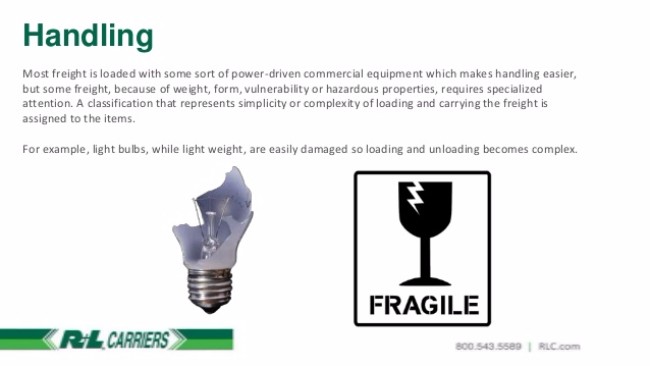- The Density of the Freight
- The Stow-ability
- The Handling and the
- Liability from damage, break, damage, spoilage
Here I will explain each one of them:
Source: www.slideshare.net
1. The Density of the Freight – For this parameter we calculate the weight and the dimensions of the freight. The density is actually pounds per cubic foot that the items are taking. The class will be low if the density is high and opposite if the density of the item is low the cost will be high.
This is useful for the trucking companies to determine how much space the freight will consume in the truck. The density is calculated by dividing the weight (in pounds) by the volume of the item in cubic feet.
- Density of the item = Weight (in pounds)/Volume (in cubic feet)
- The volume in cubic feet you can calculate in this way: Length (in inches) x Width (in inches) x Height (in inches) /1,728
Source: www.slideshare.net
2. Stowability – Some items are regulated by the carrier policies or the government and can’t be loaded together because they belong in the category of hazardous materials. If the items belong in this group means that those items need to be transported specifically.
We can determine the stow-ability on how the freight can be loaded and carried (easy or difficult). The freight that is hazardous or fragile may require a special treatment and attention while loading and unloading.
Source: www.slideshare.net
3. Handling – Most of the freight is loaded by mechanical equipment (forklifts or pallet jacks) but some freight because of the shape, hazardous properties, fragility or the weight require special equipment and handling. The difficulty of the item to be loaded and carried is assigned on the item which affects on the freight class codes ranking.
Source: www.slideshare.net
4. Liability – Liability is consideration and probability the freight to be stolen or damaged. So the liability also affects on the freight classification by freight class codes.










